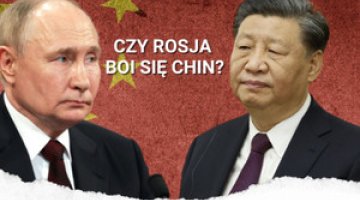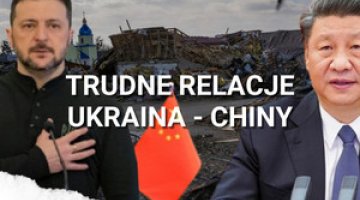The poor outlook for the economy will hamper reforms in China
Author: Jakub Jakóbowski
The record-breaking 8.5% stock-market decline in Shanghai on 24 August has been labelled ‘Black Monday’, and one day later the Shanghai Composite index dropped a further 7.63%. The fall in stock prices continuing over the past two months (43% as compared to last year’s peak) and the nervous reaction from global markets prove that investor confidence that China will be able to maintain the projected GDP growth rate and to smoothly change its economic model is in freefall. The first half of August also brought the largest devaluation of the yuan to the US dollar since 1994, reaching around 3.2%. A series of government interventions on the capital markets and yuan exchange rate manipulations appear to have been very costly and have failed to bring the desired result. The unsuccessful response to the rapidly deteriorating economic situation has cast doubt on the two issues which are fundamental for the success of the planned change of the economic model: the economic potential to reach a 7% GDP growth as part of the ‘new normal’, and the ability of President Xi Jinping and his milieu to stabilise the economic situation and stimulate growth.
Reforms in the time of instability
Over the past few years, China has been engaged in a broad internal discussion aimed at identifying the key challenges the state is facing. The existing economic model based on the high share of investments in GDP, stimulating exports and a cheap labour force is no longer working. The leadership of the Communist Party of China (CPC) decided to radically change the country’s economic model and rebuild Chinese society with the intention of ensuring more sustainable growth and doubling Chinese citizens’ incomes per capita. The timeframe for the implementation of the changes was set by President Xi Jinping and his aides as 2021, the one hundredth anniversary of the foundation of the Communist Party of China. Creating a so-called moderately prosperous society (小康社会), a vast Chinese middle class guaranteeing high domestic consumption and thus a new source of economic growth, is one of the pillars of the reforms. Heavy industry, which is harmful to the natural environment, and decreasingly competitive exports of less sophisticated goods are to be replaced with the rapidly developing services sector, innovations and high-tech industry. The Chinese leadership have also determined that it will be impossible to maintain GDP growth in double figures, setting a growth level of around 7% as a goal, which has been branded as the ‘new normal’. Offering the ‘decisive role’ in resource allocation to the market forces and reducing the state’s engagement in the economy in general formed the key element of the reforms discussed during the third plenum of the CPC’s Central Committee in 2013. They also promised to gradually liberalise the yuan exchange rate, to liberalise the capital market and to open it up to the world, to reform the sector of state-owned companies and to reduce administrative restrictions on business. This socio-economic transformation is planned to take place under the CPC’s leadership – all political reforms were ruled out during the third plenum.
The long-term reform agenda was upset due to the worsening outlook for the Chinese economy in 2015. As investor sentiments turned sour, the stock market bubble which had been growing from 2014 burst on 15 June this year. The stock sell-off seen over the past few weeks was further intensified due to poor export results, which in July 2015 fell 8.3% year-on-year, and the falling Purchasing Managers’ Index (PMI) this August. All this has undermined the faith that the planned 7% GDP growth will be achieved. The potential disastrous consequences of the stock market crash and the deteriorating situation in the industry made the Chinese leadership carry out a series of interventions on the capital and currency markets, and introduce strict regulations and quick institutional changes. The Chinese leaders responded to the economic problems as they had in the case of previous crises – by tightening their grip on the economy.
Stock market in a stranglehold
The boom on the market of A shares (which are available almost exclusively to Chinese investors) seen in China from June 2014 was to a great extent an effect of the government’s moves, encouraging everyone via the media to invest on the stock market. One important fact is that stock trading in China has its own unique character – over 85% of the trading is effected by around 100 million individual investors. More than 33 million new brokerage accounts were opened in China in the first five months of 2015 (a 23% increase), and the stock trade volume in May 2015 alone was comparable to the volume achieved in 2014 as whole. According to estimates, around 61% of new investors had secondary education at best, and 6% of them are illiterate. The investing fever which caused the Shanghai Composite to grow by 250% within just one year ended in a series of falls in June this year, as a consequence of which the index lost around 20% of its value in just one week. To prevent a further downturn, the Chinese government decided to make use of a number of administrative instruments. Between 27 June and 9 July, the regulations concerning the purchase of stocks for money originating from loans were relaxed, a stabilisation fund for brokers worth around US$20 billion was established, an initial public offering (IPO) was withheld, and a temporary ban on selling shares was imposed on state-owned companies and holders of blocks of shares larger than 5%. Monetary policy measures were also taken – interest rates and compulsory reserve rates were reduced. These moves, along with the investment of around US$200 billion of public funds in the stock market, made it possible to stabilise the stock markets for around three weeks. However, market confidence has not been regained for good. Even though the government announced on 23 August that insurance funds with vast financial resources at their disposal had been admitted to the stock market, the Shanghai stock exchange saw a record-breaking fall of 8.5% on 24 August. The index dropped a further 7.63% the following day, falling below the psychological barrier of 3,000 points.
The unexpected devaluation of the yuan
Between 11 and 13 August, the Chinese yuan lost around 3.2% of its value against the US dollar, this being the greatest single devaluation of the Chinese currency since 1994. According to the Chinese government’s official line, this move was a sign of the introduction of the market factor to the mechanism of setting the value of the yuan (one of the first steps in the process of liberalising the exchange rate). The unclear intentions of the Chinese central bank and the previous interventions on the stock market led to observers being divided. Some foreign commentators recognised the explanations given by the People’s Bank of China as credible, viewing the devaluation as a response to a real revaluation of the currency and a reaction to market signals, thus making a liberalisation of the yuan more realistic. On the other hand, the Chinese bank’s move was viewed by many commentators as further proof of the weakening condition of the Chinese economy and as an intervention intended at supporting exporters. The international press started speculating about a series of further devaluations, and that a scenario of the Asian crisis from 1997 might recur. The uncertainty regarding the way the situation will develop has strengthened the pressure on capital outflow from China. According to Financial Times, since the yuan exchange rate was pegged to the US dollar again after the devaluation of 11 August, the cost of the interventions intended to keep it at the new level reached around US$10 billion daily, leading to a depletion of reserves by more than US$200 billion in total.
Old instruments to handle new challenges
The measures taken by the Chinese government over the past three weeks indicate that the worsening economic outlook is changing the framework within which the Chinese leadership can continue thorough reforms. Firstly, the interventions and the observed government control of the economy mark a backwards step in the context of the economic liberalisation promised by the CPC aimed at ensuring long-term growth and stability. This makes market participants uncertain about the direction in which the Chinese economy is heading and imposes significant risk on the control instruments used in the preceding years. Secondly, given the worsening outlook for the Chinese economy, a much faster response is needed than in the period of the blistering growth seen over the past 30 years – significantly less time remains for the proven method of gradual reforms, according to Deng Xiaoping’s maxim “cross the river by feeling the stones”.
The doubts concerning President Xi Jinping’s moves are intensifying, and this poses a potential threat to his uniquely strong political position inside the party and his popularity among the public, unseen among his immediate predecessors. The main challenge for the Chinese leadership at present is to regain investors’ confidence and to prove that the Chinese government is able to cope with the challenges and above all to continue the process of changing the economic model. The possibilities of intervention on the capital and currency markets are still quite extensive, but their effectiveness is falling. This forces President Xi Jinping to make the choice between maintaining the grip on the economy until the economic problems have been overcome (which is a familiar solution but expensive and offers no guarantee that it will bring the desired result), and accelerated reforms and liberalisation (which may potentially escalate the crisis and deprive the government of some of its control instruments.





